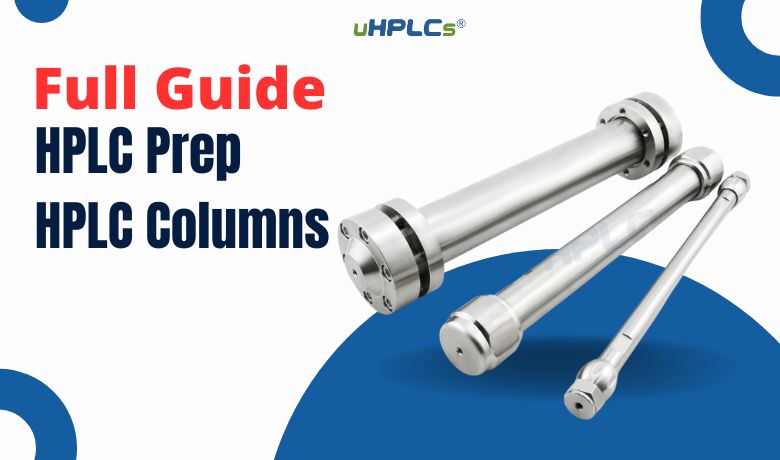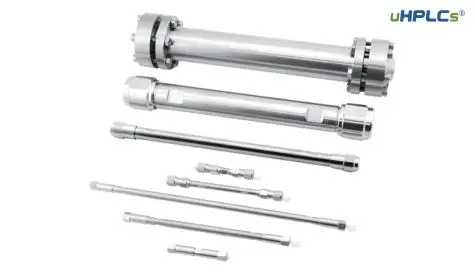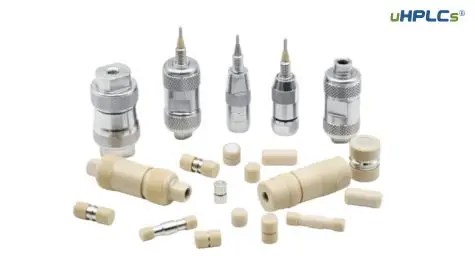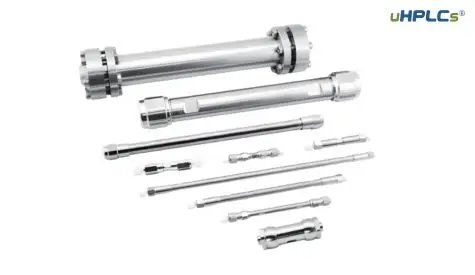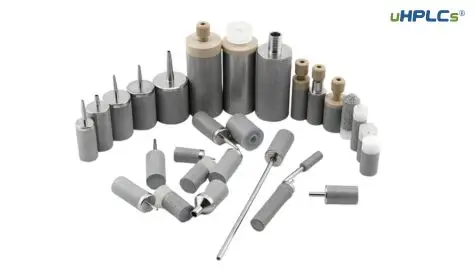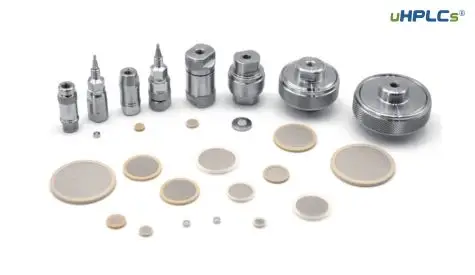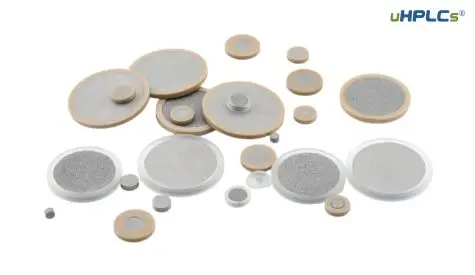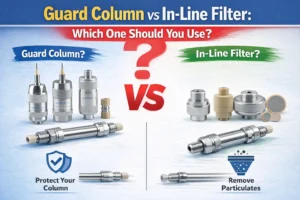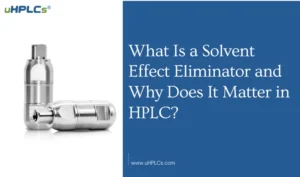High-performance liquid chromatography (HPLC) is a workhorse technique in labs worldwide, separating complex mixtures into their individual components. But what if you need more than just identification? Preparative HPLC takes the power of HPLC to the next level, isolating and purifying desired compounds in quantities suitable for further analysis or applications. This guide delves into the world of preparative HPLC, equipping you to harness its power for your specific needs.
Understanding Preparative, Semi-Preparative, and Analytical HPLC
Ever felt the need to zoom in on a specific component within a mixture but on a larger scale? That’s where preparative and semi-preparative HPLC come into play. This section clarifies the distinctions between these HPLC techniques and their analytical counterpart.
Unveiling the Definitions:
- Preparative HPLC: Imagine a technique specifically designed to isolate and purify substantial quantities of your desired compound. That’s the magic of preparative HPLC.
- Semi-Preparative HPLC: Think of this as the middle ground between analytical and preparative HPLC. It tackles purifications on a medium scale, making it ideal for situations where larger quantities are needed compared to analytical methods.
- Analytical HPLC : This is the workhorse for analyzing the components within a mixture. It excels at identifying and quantifying individual compounds but on a smaller scale.
Common Ground: The Foundation of HPLC
While their applications differ, all three techniques share some core principles:
- Fundamental Separation Mechanisms: They all rely on the same fundamental principles of chromatography to separate components based on their interactions with the stationary phase and mobile phase.
- Instrumental Similarities: The basic instrumentation for all three methods is similar, with components like pumps, columns, detectors, and fraction collectors. However, the scale and configuration might be adjusted for preparative and semi-preparative setups.
Distinct Paths: Size, Scale, and Purpose
Now, let’s delve into the key differences that set these methods apart:
- Column Size and Capacity: Analytical HPLC utilizes smaller columns with a limited capacity for handling samples. As we move towards preparative HPLC, the columns become progressively larger, offering a significantly higher capacity to accommodate larger sample volumes. Semi-preparative columns occupy the middle ground, offering a balance between the two extremes.
- Applications Driven by Scale: Analytical HPLC reigns supreme when it comes to analyzing samples to identify and quantify components. Semi-preparative HPLC steps in when you need to purify moderate amounts of a desired compound. Finally, preparative HPLC takes center stage when large-scale isolation and purification are essential.
- Flow Rates and Solvent Consumption: Preparative HPLC operates at higher flow rates to process larger sample volumes. This naturally leads to a higher consumption of solvents compared to analytical HPLC, which utilizes lower flow rates due to the smaller sample sizes.
Size Option of Each Columns
| Function | Preparative HPLC | Semi-Preparative HPLC | Analytical HPLC |
|---|---|---|---|
| Definition | Large-scale purification | Medium-scale purification | Analysis of mixture components |
| Column Size (Internal Diameter x Length) | 21.2 mm – 50 mm x 250 mm – 1000 mm | 10.0 mm – 21.2 mm x 150 mm – 500 mm | 2.1 mm – 4.6 mm x 100 mm – 250 mm |
| Applications | Large-scale isolation and purification | Moderate purifications | Analysis and identification |
| Flow Rates & Solvent Consumption | High | Moderate | Low |
Key Features of Preparative HPLC Columns
Preparative HPLC columns are the workhorses responsible for large-scale purifications. This section dives into the critical features that define their performance and suitability for your specific needs.
1. Size Matters: Capacity for Large-Scale Victories
Preparative HPLC columns are significantly larger than their analytical counterparts. This translates to a higher loading capacity, allowing you to process larger sample volumes for efficient purification. Typical preparative column dimensions range from 21.2 mm to 50 mm in internal diameter (ID) and 250 mm to 1000 mm in length. This expanded size allows them to handle the increased sample loads associated with preparative separations.
2. Material Muscle: Durability Built to Last
The demands of preparative HPLC necessitate robust column construction. Stainless steel is a popular choice due to its exceptional strength, chemical compatibility, and affordability. For highly corrosive mobile phases or applications requiring even greater durability, titanium columns offer an alternative, albeit at a higher cost. The chosen material directly impacts a column’s performance and longevity.
3. Performance Metrics: Quantifying Success
Just like analytical columns, preparative columns are evaluated based on key performance metrics. Here are some crucial aspects to consider:
- Resolution: A fundamental measure of how well a column separates two closely eluting peaks. Higher resolution is desirable for achieving pure isolated fractions.
- Efficiency: This metric reflects the band broadening that occurs as a sample travels through the column. Higher efficiency translates to sharper peaks and improved resolution.
- Pressure Ratings: Preparative HPLC often utilizes higher flow rates to process larger volumes. The column needs to be able to withstand these elevated pressures without compromising performance or safety.
Semi-Prep HPLC Columns
Sometimes, you need more than analytical capabilities but full-scale preparative purification might be overkill.
That’s where semi-preparative HPLC columns enter the scene. This section explores these versatile tools and how to choose the right one for your needs.
The Goldilocks of HPLC Columns: What is a Semi-Prep Column?
Imagine a column that bridges the gap between analytical and preparative HPLC. That’s the essence of a semi-prep column. These columns boast a size and capacity that falls between the two extremes. Typically, their internal diameters (ID) range from 10.0 mm to 21.2 mm and their lengths from 150 mm to 500 mm. This intermediate size allows them to handle moderately sized samples for purification, making them ideal for situations where analytical amounts are insufficient but full preparative scale is not yet necessary.
Advantages that Tip the Scales: Why Use Semi-Prep Columns?
Here are some compelling reasons to consider semi-prep HPLC columns for your purifications:
- Scale Up from Analytical Work: Have you identified your target compound using analytical HPLC but need larger quantities for further analysis or applications? Semi-prep columns provide a smooth transition, allowing you to readily purify moderate amounts without completely revamping your methodology.
- Pilot Runs Before Full Preparative Scale: Planning a large-scale purification using preparative HPLC? Semi-prep columns offer a valuable platform for pilot runs. You can optimize separation conditions and ensure feasibility before committing to a full-scale purification.
- Cost-Effective Option: Compared to preparative HPLC, semi-prep purifications often require less solvent and smaller amounts of expensive stationary phases, translating to cost savings.
Choosing Your Perfect Match: Selecting a Semi-Prep Column
Selecting the ideal semi-prep column hinges on several factors:
- Sample Characteristics: Consider the properties of your target compound, such as its polarity and size. This will influence the choice of stationary phase for optimal separation.
- Desired Purity: The level of purity required for your downstream application will impact the selection of column dimensions and packing materials.
- Compatibility: Ensure compatibility between your chosen column and the mobile phase solvents you plan to use.
By carefully considering these factors, you can select a semi-prep HPLC column that delivers optimal performance and efficiency for your specific purification needs.
Preparative HPLC Column Selection
Preparative HPLC columns are the workhorses of large-scale purification. But with an array of options available, choosing the right one is crucial for success. This section equips you with the knowledge to select the perfect preparative HPLC column for your specific needs.
The Art of Selection: Criteria for Choosing Your Column
When selecting a preparative HPLC column, consider these key factors:
Sample Type: Understanding the properties of your target compound, like its size, polarity, and charge, is paramount. This will guide your choice of stationary phase chemistry (e.g., C18, HILIC) for optimal interaction and separation.
Loading Capacity: Preparative HPLC thrives on handling larger samples. Consider the amount of sample you need to purify and choose a column with sufficient loading capacity to accommodate it. Remember, overloading a column can compromise resolution and purity.
Desired Separation: The level of separation required for your target compound dictates your column selection. If you need to isolate multiple closely eluting components, a column with high efficiency and resolution might be necessary.
Column Dimensions: Preparative columns boast larger dimensions compared to analytical columns. The optimal size (diameter and length) will depend on your sample load, flow rate requirements, and desired resolution.
Particle Size: Particle size plays a role in resolution and pressure drop. Smaller particles offer higher resolution but generate higher backpressure. Conversely, larger particles create lower backpressure but may compromise resolution. Striking a balance between these factors is crucial.
Here’s a helpful tip:
Consult your column manufacturer’s selection guides or application notes.
These resources often provide valuable recommendations based on specific sample types and separation challenges.
Popular Preparative HPLC Column Brands
The world of preparative HPLC offers a variety of column options from reputable brands. Here’s a brief overview of some well-known names:
Waters Prep HPLC Columns: Waters, a leading chromatography player, offers a comprehensive range of preparative HPLC columns with diverse stationary phases and dimensions to cater to various purification needs.
Spherisorb ODS1 Prep Columns: These preparative columns from Sigma-Aldrich feature a popular C18 reversed-phase stationary phase, making them suitable for a broad range of nonpolar to moderately polar analytes.
- uHPLCs Prep HPLC Columns: uHPLCs might offer a range of preparative column sizes and stationary phases to cater to diverse purification needs in uHPLC. incldued C18, C18, Phenyl, for tailored separations etc
SunFire Prep OBD Columns: This line of preparative columns from Phenomenex utilizes high-purity silica and offers a variety of bonded phases, including C18, C4, and Phenyl, for tailored separations.
Installation and Maintenance
Preparative HPLC columns are an investment in your purification workflow. Proper installation and maintenance are essential to ensure optimal performance, maximize their lifespan, and achieve consistent results. This section provides a roadmap for both aspects.
Building a Strong Foundation: Proper Preparative HPLC Column Installation
Just like any high-performance instrument, preparative HPLC columns require careful installation for optimal results. Here’s a simplified step-by-step guide to get you started:
Gather Your Supplies: Ensure you have the necessary tools, including wrenches for column fittings, solvent for flushing, and waste container.
Consult the Manual: Refer to your specific column and HPLC system’s manuals for detailed installation instructions. These may include specific torque requirements for fittings.
Prepare the Column: Remove the storage plugs from the column inlet and outlet. It’s crucial to handle the column carefully to avoid damaging the frit at either end.
Connect the Column: Carefully connect the column to the HPLC system, ensuring finger-tight connections for the ferrules on both the inlet and outlet tubing.
Tighten the Fittings: Use the wrenches to tighten the fittings following the recommended torque specifications from the manual. Overtightening can damage the column, while loose connections can lead to leaks.
Prime the System: Once connections are secure, flush the column with the mobile phase at a low flow rate to remove any air bubbles and ensure proper flow.
Equilibrate the Column: Equilibrate the column with the mobile phase at the desired flow rate for a specified time (often 10-15 column volumes) before running your separation. This ensures the stationary phase is fully solvated for optimal performance.
Remember:
Safety is paramount. Wear appropriate personal protective equipment (PPE) like gloves and safety glasses
when handling solvents and working with the HPLC system.
Extending the Lifespan: Essential Maintenance Tips for Preparative HPLC Columns
Proper maintenance is key to ensuring the longevity and performance of your preparative HPLC columns. Here are some best practices to follow:
- Storage: When not in use, store your column filled with a compatible solvent (often recommended by the manufacturer) to prevent the stationary phase from drying out and cracking.
- Cleaning: Regularly clean your column with appropriate solvents to remove any accumulated contaminants that could affect separation efficiency. Follow the manufacturer’s recommended cleaning protocols.
- Flow Rate Management: Avoid exceeding the recommended maximum flow rate for your column. High flow rates can generate excessive pressure and damage the column packing.
- Sample Preparation: Pre-filter your samples to remove any particulate matter that could clog the column frit and hinder performance.
- pH Considerations: Be mindful of the pH limitations of your column’s stationary phase. Operating outside the recommended pH range can degrade the stationary phase and compromise performance.
By following these installation and maintenance practices, you can ensure your preparative HPLC columns deliver optimal performance and serve you well for an extended period.
Troubleshooting Common Issues
Even with the best practices in place, you might encounter occasional issues with your preparative HPLC columns. This section equips you with the knowledge to troubleshoot common problems and get your purifications back on track.
Common Culprits: A List of Preparative HPLC Column Issues
Several factors can lead to suboptimal performance with preparative HPLC columns. Here are some frequently encountered issues:
- Decreased Resolution: This can manifest as broader peaks and reduced separation between your target compound and impurities. It might be caused by factors like column fouling, inappropriate mobile phase selection, or using a column that has reached its usable lifespan.
- High Backpressure: Excessive pressure can hinder flow and damage the column. Potential causes include clogged frits, using a mobile phase with high viscosity, or exceeding the recommended flow rate for your column.
- Peak Tailing: This occurs when peaks appear asymmetrical with a tailing edge. It can be caused by overloaded samples, inappropriate mobile phase composition, or secondary interactions between the sample and the stationary phase.
- Loss of Column Efficiency: This translates to broader peaks and reduced resolution over time. It can be a consequence of column aging, repeated use with harsh solvents, or improper cleaning protocols.
Resolving the Roadblocks: Solutions and Tips
Don’t despair if you encounter these issues. Here are some practical steps to troubleshoot and potentially resolve them:
Decreased Resolution:
- Try cleaning the column using recommended protocols to remove potential contaminants.
- Re-evaluate your mobile phase selection for optimal interaction with your sample.
- If the column is old or heavily used, consider replacing it.
High Backpressure:
- Check for clogged frits at the column inlet or outlet.
- Ensure you’re using a mobile phase with appropriate viscosity for your flow rate requirements.
- Reduce the flow rate if it exceeds the recommended maximum for your column.
Peak Tailing:
- Reduce the sample load if overloading is suspected.
- Fine-tune your mobile phase composition to optimize interactions and improve peak symmetry.
- Investigate potential secondary interactions between your sample and the stationary phase.
Loss of Column Efficiency:
- Implement a regular cleaning regimen to maintain the integrity of the stationary phase.
- Avoid using excessively harsh solvents that can degrade the column packing material.
- Consider replacing the column if cleaning and optimization efforts fail to restore performance.
Tips You Should Remember:
If you’re unsure about the cause of a specific issue, consult your column manufacturer’s technical support team or a chromatography expert for assistance. They can provide valuable insights and guide you through the troubleshooting process specific to your situation.
By understanding these common problems and their potential solutions, you can effectively troubleshoot preparative HPLC column issues, ensuring consistent and optimal performance for your purifications.
Conclusion
Summary of Key Points
- Understanding HPLC Columns: We discussed the differences and similarities between preparative, semi-preparative, and analytical HPLC columns.
- Key Features: Highlighted the importance of column size, capacity, material, and performance metrics.
- Semi-Prep HPLC Columns: Explained what they are, their advantages, and how to choose the right one.
- Column Selection: Provided criteria for selecting preparative HPLC columns and compared popular brands like Waters and Spherisorb.
- Specific Columns: Detailed features and applications of specific columns, including semi-preparative HPLC column C18.
- Installation and Maintenance: Offered a step-by-step guide for proper installation and maintenance tips.
- Troubleshooting: Identified common issues and provided practical solutions.
Further Resources
- Waters Prep HPLC Columns
- Spherisorb ODS1 Prep Columns
- uHPLCs Prep HPLC Columns
- Basics of HPLC
- Guide to Choosing HPLC Columns
Contact us
For more detailed advice or to discuss your specific chromatography needs, please contact us at sales@uhplcs.com. We’re here to help you optimize your HPLC processes and achieve the best results.

